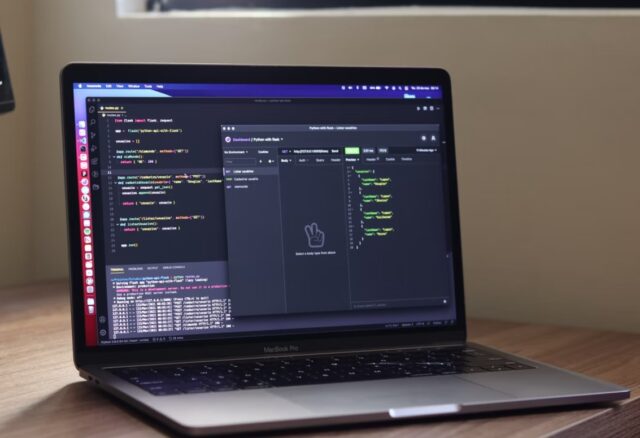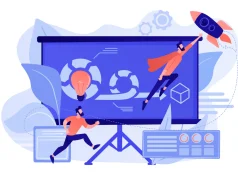There are a variety of ways to extract data from different data sources. The most common method is to use a data extraction tool, either a stand-alone program or a web-based application. Another way to extract data is to use a script, which is a set of instructions that can be written in various programming languages. You can also manually extract data by viewing the source code of the data source and copying the desired data. Keep reading to learn more about the different data extraction methods and what is extraction, transformation, and loading.
Extraction, Transformation, and Loading

ETL (Extract, Transform, Load) is a process for extracting data from one or more sources, transforming it to meet specific requirements, and loading it into a target database or data warehouse. The term is generally used in large-scale data integration projects, but it can also be used for smaller projects.
ETL tools and techniques can move data from any source to any destination, including data stored in a traditional RDBMS, a data warehouse, a Hadoop cluster, a NoSQL database, or a data lake.
The first step in an ETL process is to identify the source data. This can be a challenge, especially if the data is stored in multiple locations or is in an unfamiliar format. Once the information is identified, it needs to be extracted. This can be done manually or with the help of a data extraction tool. The extracted data is then transformed to meet the specific requirements of the target system. This can include reformatting the data, cleansing it of errors, and loading it into the correct structure for the target system. The final step is to load the data into the target system. This can be done manually or with the help of an ETL tool. Once the data is loaded, it can be accessed by the applications and users that need it. ETL aims to improve the efficiency and accuracy of data analysis by consolidating all the data into a single source. This process can be automated using software tools.
Combining Data From Multiple Data Sources

The process of combining data from different data sources is known as data federation.
Data federation allows you to combine data from different sources into a single, unified view. This can be useful for reporting and analysis purposes or for consolidating data from multiple systems into a single system.
There are several ways to combine data from multiple data sources. The most common approach is to use a database federation server such as IBM InfoSphere Federation Server or Microsoft SQL Server 2012 Federation Services. These servers allow you to create a virtual database that combines data from multiple sources. You can then query the virtual database using standard SQL queries.
Another approach is to use an ETL tool such as IBM InfoSphere BigInsights QuickSight or Microsoft SSIS (SQL Server Integration Services). These tools allow you to extract data from different sources and load it into a single target database. This can be useful for consolidating data from multiple systems into a single system or creating a single version of the truth across multiple systems.
There are many benefits to using ETL tools, which is why they are so popular in the business world. Some of the key benefits include:
• Increased efficiency: ETL tools help to automate the process of moving data between systems, which can significantly increase efficiency. This is because the tools can be configured to automatically move data as it is updated, eliminating the need for manual intervention.
• Improved accuracy: The automated nature of ETL tools also helps to ensure accuracy, as there is less opportunity for human error.
• Greater flexibility: ETL tools can be used to move data between a variety of different systems, which increases flexibility and ensures that data can be accessed in the most efficient way possible.
• Reduced costs: ETL tools can help to reduce costs by automating the data processing process. This means that fewer staff are needed to carry out the same tasks, and that resources can be used more effectively.
Connecting to Different Sources of Data

When it comes to extracting data from different sources of data, there are a few different ways that this can be done. One way is to connect to the source directly and extract the data manually. Another way is to use an intermediary tool that can connect to multiple data and do the data extraction for you. A third way is to use a programming language to connect to the source data and extract the data yourself.
The first method, connecting to the source data directly and extracting the data manually, is fairly straightforward. You need access to the data source and knowledge of extracting the desired information from it. This method can be helpful if you only need a small amount of information from particular source data or if you want complete control over what information is extracted. However, this method can be time-consuming and tedious if you need to extract a large amount of data from multiple sources.
The second method, using an intermediary tool that can connect to multiple data sources and extract the data for you, it’s a bit more complex but has several advantages over the first method. These tools make it easy to gather information from multiple sources quickly and easily without knowing how each source works. They also often include features that make parsing or cleaning up the data more manageable than doing it by hand. However, these tools can be expensive and may not have all the functionality you need.
Additionally, they may require some technical expertise to use them effectively.
The third method, using a programming language to connect to the source and extract the data yourself, provides maximum flexibility and requires more work than either of the other methods. With this approach, you have complete control over how information is extracted from each source, and you can customize your code specifically for your needs.
However, this also means that you need to have coding skills to build the necessary scripts or programs, and you must also have access to the sources where you want information. This method can be time-consuming and challenging, especially if you need multiple data sources.









